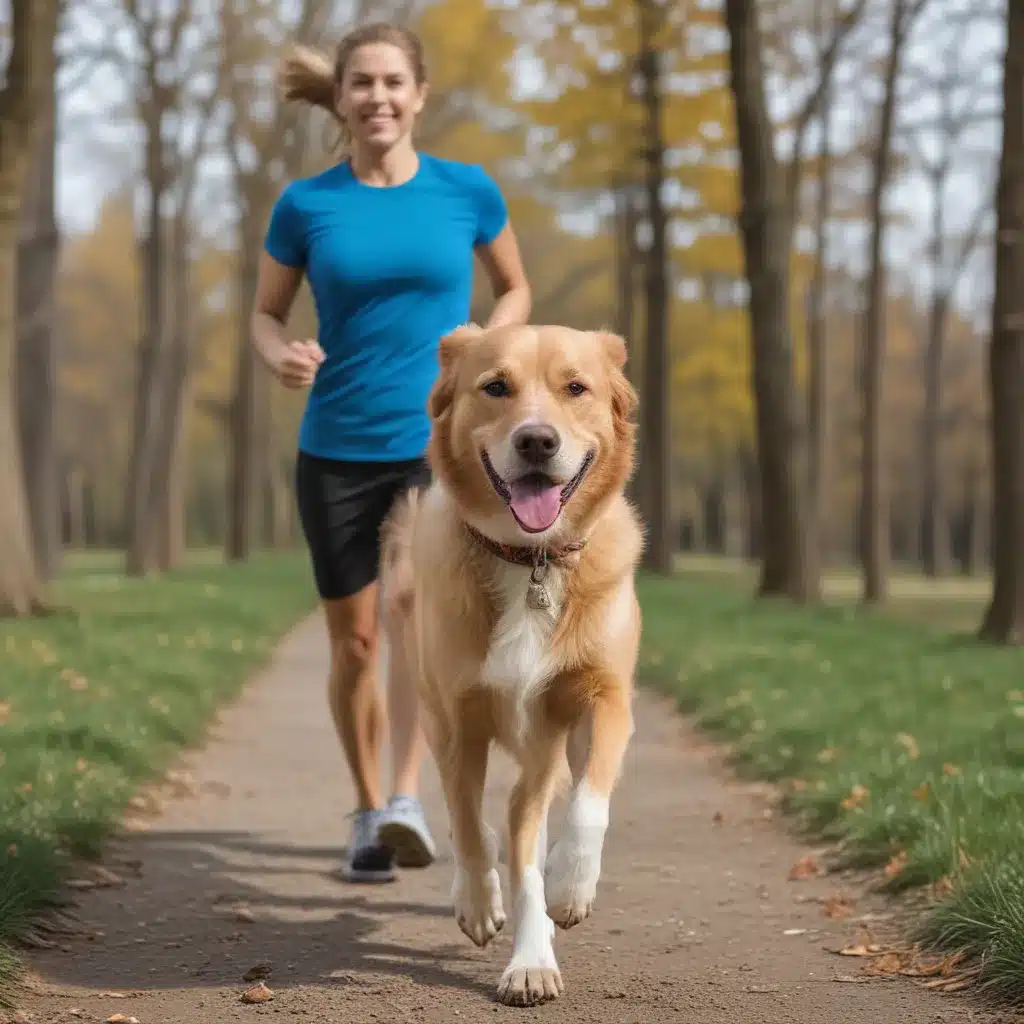
The Zoomies and Other Signs Your Dog Needs More Activity
As a proud dog parent, I know all too well the joy and chaos that comes with caring for our canine companions. One of the biggest questions I often find myself grappling with is: “How much exercise does my dog really need every day?” It’s a tricky balance, isn’t it? You want your furry friend to be happy, healthy, and burning off that endless supply of energy, but sometimes our own busy schedules just don’t seem to align.
I’ll never forget the first time I witnessed the infamous “zoomies” in my Labrador, Winston. One minute he was calmly lounging on the couch, the next he was racing laps around the living room, jumping onto the furniture, and generally causing mayhem. It was both hilarious and a bit concerning – was I not providing him with enough physical and mental stimulation?
According to the experts at Rover.com, the zoomies are a telltale sign that your pup needs more exercise. Puppies, in particular, tend to have an abundance of energy and may exhibit these frenzied bursts of activity several times a day. As an owner, it’s important to provide them with plenty of short play sessions and walks to keep that pent-up energy at bay.
But it’s not just puppies who require regular physical activity. The American Kennel Club explains that a dog’s exercise needs are heavily influenced by their breed, age, and overall health. High-energy pups like Huskies and Border Collies will naturally need more vigorous exercise than, say, a lazy Bulldog or Cavalier King Charles Spaniel. And as our canine companions grow into their senior years, we may need to adjust their routine to accommodate any joint pain or other age-related issues.
Tailoring Your Dog’s Exercise Routine
So, how do you ensure your furry friend is getting the right amount of daily exercise? It’s all about finding the sweet spot through a bit of trial and error. Start by observing your dog’s behavior and energy levels throughout the day. Are they constantly pestering you to play? Chewing on furniture or digging in the trash? These could be signs they’re not burning off enough steam.
The PDSA suggests aiming for a minimum of one to two walks per day, with additional playtime and mental stimulation in between. But the duration and intensity of those walks can vary greatly depending on your pup’s individual needs.
For instance, my high-energy Labrador does best with a brisk 45-minute jaunt in the morning, followed by a slower, more leisurely stroll in the evening where he can stop and sniff to his heart’s content. And on the days when the weather isn’t cooperating, I make sure to have a stash of interactive toys and puzzle feeders on hand to keep him mentally engaged. It’s all about finding that perfect balance.
Enriching Your Dog’s Life Beyond Just Exercise
Of course, physical activity is just one piece of the puzzle when it comes to keeping our canine companions happy and healthy. As the experts at Outdoor Dog Adventures point out, providing adequate mental stimulation is equally important. After all, a bored dog is a mischievous dog!
That’s why I love incorporating little training sessions and trick-teaching into our daily routine. Not only does it give Winston’s brain a workout, but the positive reinforcement and one-on-one bonding time is so rewarding for both of us. And on the weekends, we like to mix things up with hikes, trips to the dog park, or even just a jaunt around the neighborhood to explore new sights and smells.
At the end of the day, the key is to pay attention to your individual pup’s needs and get creative in finding ways to keep them physically and mentally engaged. Whether that means recruiting the help of a dog walker or signing up for agility classes, the iHaveDogs website has a wealth of resources to help you develop the perfect exercise routine for your furry friend.
Staying Safe and Having Fun
Of course, with any exercise regimen, it’s important to keep safety at the forefront. That means always being mindful of weather conditions, your dog’s physical limitations, and any potential hazards in your environment. The AKC advises against overdoing it, especially with puppies and senior dogs whose developing or aging bodies may be more vulnerable to injury.
And let’s not forget the most crucial element – making sure your dog is actually enjoying themselves! If you notice they’re displaying signs of fear, stress, or discomfort during your outings, it may be time to reevaluate your approach. The PDSA suggests finding ways to make walks and play more fun, whether that’s by incorporating their favorite toys, treats, or just slowing down to let them sniff to their heart’s content.
At the end of the day, the goal is to cultivate a happy, healthy, and well-exercised pup. And with a bit of creativity, patience, and the right resources, I’m confident you can do just that. So why not lace up those sneakers, grab the leash, and get ready for an adventure? Your furry friend will thank you for it.

